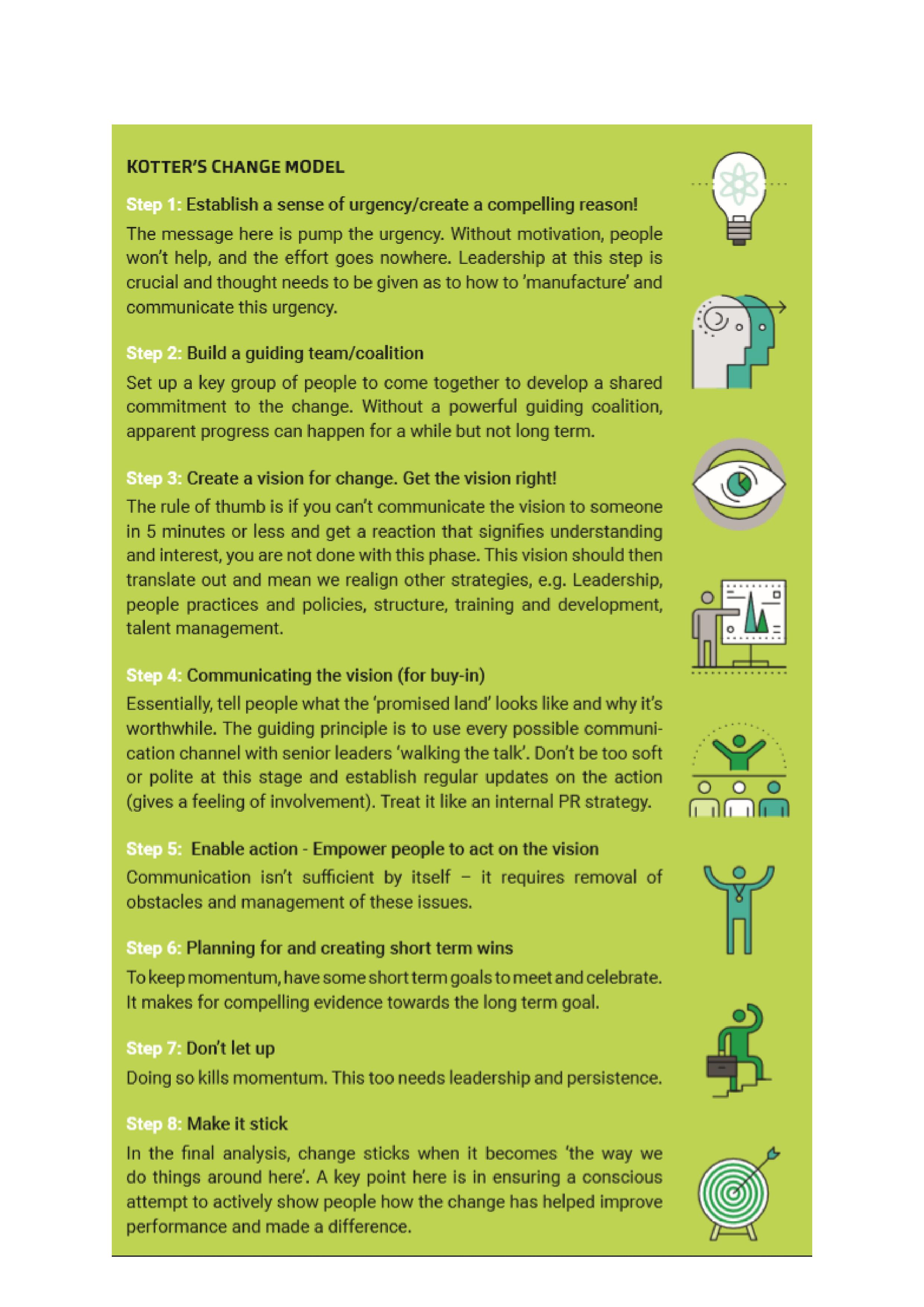Changing your business structure from sole trader to a company
Are you a sole trader or a contractor? As your business grows, you may find that you need to employ staff...
Time to read: 4 mins
Business is increasingly operating in a VUCA environment (volatile, uncertain, complex and ambiguous) and with the shift to AI (artificial intelligence) and new digital technologies, business now operates in an increasingly disrupted environment. The world is progressing so fast that there is now a risk that those left behind can no longer catch up.
Remaining abreast of the game requires organisations and their leaders to embrace change and lead through it. Most business leaders today would agree the organisational change is constant and must become a top priority. However, leading change is one of the more difficult aspects of a leader’s job description and the reality of leading it is somewhat different. What we see in business is a level of comfort in acknowledging change and the need for it, but there is a failure to execute and a failure to execute well. Much of the time businesses and leaders are winging it rather than taking a conscious approach. This is evidenced in the fact that two out of three transformation initiatives fail. Change is good. But change is also hard.
Transformational change is easier said than done. At a very simple level, successful change initiatives start at the top. The CEO and Senior Leadership Team need to be the change champions. It is them who will create a sense of urgency and ensure the vision is set, focus is maintained, and that change is aligned with strategy. Naturally, some people will be more resilient than others and some more resistant. Further, certain people have the ability to pick up and learn change better than others, and this can now be measured at the selection stage. Typically, senior leaders will often see change differently than employees. For many employees, change may be neither sought after nor welcomed.
Don’t misjudge the significance of this gap. It can often be received as redefining what they signed up for. Essentially, the employment pact/engagement made is now shifting. However, change can be a learned behaviour that is developed and practised in business, and it can become a cultural norm where having a growth-mindset and openness to change is valued and expected. Having a growth mindset may well now be seen as more valuable than just the intellectual capacity to learn new things.
Change should also be part of your leadership strategy. From there, strategy becomes rollout. It can require reallocating time, budget and resources from one area in order to invest in change in another. It also requires setting a clear time frame, involving the right people.
Arguably real change cannot occur without a conscious and planned approach to it. Adopting a model to outline various key steps is an excellent way to drive change. A foremost expert on leadership and change is John Kotter who boasts a number of books to his name. His change model has been effectively utilised in a number of NZ businesses and public sector agencies. Known as Kotter’s Change Model, the model offers an eight-stage process. Each of the eight phases has specific guidelines and approaches to follow.
This process involves a series of phases that, in total, require considerable time and energy. But failure to follow these key steps can contribute to failure. Further, skipping steps only creates the illusion of speed and will not produce the same effective outcome. Critical mistakes at any of the phases will have a significant impact, slowing momentum and negating hard-won gains.

Building on the above, a recent Harvard Business Review article by Patti Sanchez overviewed the secret to leading organisational change as being empathy. Behind this is a recognition of really thinking about how employees feel about what’s ahead, how information is communicated, how understanding are they of the need for change, the change and the outcome. A lack of empathy when conveying news about organisational transformation and in undertaking the change transformation itself can be the pitfall for many businesses. Key to this is in ensuring you have an accurate gauge of the audience at every stage as to how they are feeling. Secondly, tell people what to expect. Be transparent where possible and keep people informed. Involve them in the process, so they feel like an active participant rather than just the recipient.
In this world of constant change and digitalisation, real thought needs to be given as to incorporating change into your organisational culture. Once again, this requires leaders who role model this. However, it also involves recruiting and retaining top talent that are agile enough to embrace and drive change. Further, a core focus is in developing the next generation of leaders. If you don’t know where to begin, start here looking at your talent attraction and development of talent into key leadership positions with the right competencies and mindsets to lead change.
DISCLAIMER No liability is assumed by Baker Tilly Staples Rodway for any losses suffered by any person relying directly or indirectly upon any article within this website. It is recommended that you consult your advisor before acting on this information.
Our website uses cookies to help understand and improve your experience. Please let us know if that’s okay by you.
Cookies help us understand how you use our website, so we can serve up the right information here and in our other marketing.